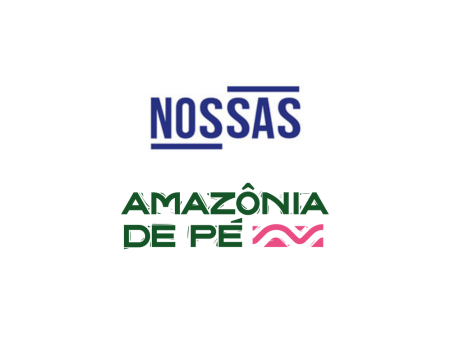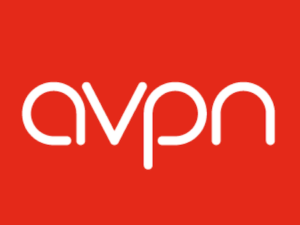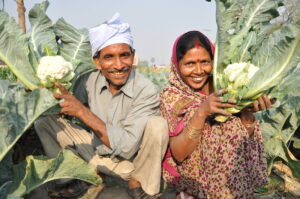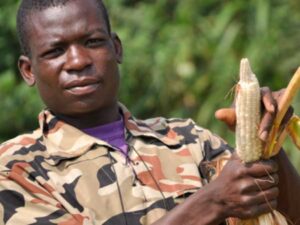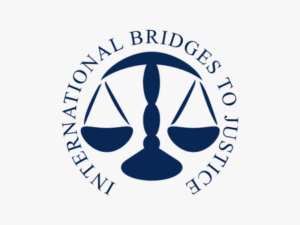NOSSAS is activist organization that works to strengthen democracy in Brazil, in defense of climate, racial and gender justice. Amazônia de Pé is a movement for the protection of the forests and peoples of the Amazon, present in networks, streets, and rivers across Brazil’s five regions.
Daniela Orofino of NOSSAS/Amazônia de Pé spoke with Ambika Samarthya-Howard on June 16, 2025. Click here to read the full conversation with insights highlighted.
Ambika Samarthya-Howard: Can you start by introducing yourself and the work you do?
Daniela Orofino: I’m Daniela Orofino. I’m the Executive Director of NOSSAS, which I co-founded in 2011. The organization is about mobilizing people to take part in political decisions. NOSSAS started when Brazil was going to receive the World Cup and host the Olympics. There was a big influx of money and a lot of modifications to the city structures. We understood that people needed to be part of these decisions. We started NOSSAS as a project where people could unite with other neighborhoods and people from their communities and ask for different kinds of rights in their own cities.
We started as a really urban-centered organization around some cities in Brazil. Rio de Janeiro was the first city where NOSSAS took action. I was an intern at that time, as after co-founding NOSSAS, I spent five years working in other organizations and within the state. Then in 2019, I came back to the organization. It was the year that NOSSAS named climate as one of our main issues. Before 2019, climate wasn’t a major issue in the organization. Gender rights and human rights were more common in our work.
In 2019, we decided that climate needed to be one of our main focuses because Brazil is the home of the majority of the Amazon rainforest, and we knew that we needed to step up for its protection. It was the middle of Bolsonaro’s government, and we were experiencing a lot of backlash in environmental policies. We were seeing the highest deforestation rates in the Amazon in Brazil’s history. We were seeing a lot of attacks on Indigenous rights. It was at that moment that NOSSAS decided to start working towards Amazon protection.
Ambika Samarthya-Howard: When you say you do public campaigns, what does that mean? Is it similar to how you would generate an election campaign or a democracy campaign?
Daniela Orofino: NOSSAS has a methodology that we use around different campaigns. We usually combine technology and online activism with offline actions. For example, we are trying to stop a bill that’s going to be voted on in Congress, so we’re going to do an online petition. We’re going to get 200,000 Brazilians to sign against this bill. Afterwards, we’re going to invite those 200,000 people to call their elected officials. Then we’re going to invite them to go to Congress and protest. We’re also going to invite them to write to local newspapers and express their opinions. We use different tactics. We usually have an online tactic as a first big one, so that we gather people who are interested in the subject, but then we put a lot of time into the mobilization. We bring them step by step to a higher level of engagement.
Ambika Samarthya-Howard: It’s more like an engagement roadmap?
Daniela Orofino: Yes. Exactly.
Ambika Samarthya-Howard: Is that the same type of approach you used for climate? Did anything change when you moved from the non–climate to the climate space?
Daniela Orofino: For climate, we did something different. Since it was a field that we hadn’t worked in before, we first decided to do an activism program to train activists who already worked around climate issues. We selected 35 youth activists from Brazil, all of them already working in the climate field, and half of them from the Amazon region, and we invited many teachers. We did a six-month training with them on advocacy strategies, campaign strategies, communication strategies, and climate. We had the biggest specialists and leaders around climate in Brazil giving classes to these young activists, as well as to our team.
It was a training for the activists, but also for our team, and our team learned a lot during this training process. It was a really important phase of our work where we connected with all these leaders, specialists, and teachers, and learned from them so we could try to do what they have been doing for decades. That’s how we started our work on climate. By the end of this six-month program, all the activists wanted to do something proactive for the protection of the Amazon.
Ambika Samarthya-Howard: I’m noticing with the climate, once you figure out your ecosystem, there’s also the mitigation versus the adaptation. The methane versus carbon, and then there are the numbers, the sciences, the economics, and the Indigenous issues. Having to choose from all of these things seems hard.
Daniela Orofino: Yes, it is. Now that we’ve chosen the Amazon rainforest as our focus, there are a lot of things we could do about the Amazon. By the end of the program, we knew that we wanted to do something audacious, that would be nationwide, and that would be proactive, as opposed to resisting a bill or something that the government is doing. We wanted to do something hopeful and inspiring, and to try to promote a view of the Amazon that we believe in.
These were all things that these young activists brought to us as their hope for this campaign. Then we had this roadmap, but we didn’t know what our main, first issue around the Amazon rainforest would be. We did a roundtable with specialists who have been working with the Amazon rainforest for decades in Brazil.
Ambika Samarthya-Howard: What makes them specialists?
Daniela Orofino: We did a search of organizations that worked with the Amazon from different perspectives. We went to the research organizations and social movements working with the Amazon, like the National Coalition of Indigenous Movements and the National Coalition of Quilombolas, and talked to each one of them. We had 90 meetings, and we asked each one what issue around Amazon protection we should attack first as a project.
Ambika Samarthya-Howard: How long did this process take you?
Daniela Orofino: Six months. It was really big. Since we had the idea, it was almost one year until we put Amazônia de Pé on the road because we wanted to do it with the support of the people who have been working for the Amazon for years. We say, Everybody needs to care about climate, and everybody needs to be a climate activist. Climate is intersectional. It’s touching everything. However, when a new organization starts to talk about climate, people who have been working with climate for a decade ask, Who are you? What are you doing here? You don’t have the authority to talk about climate.
Ambika Samarthya-Howard: It’s all about trust-building, especially in the Amazon, which is why so many organizations have worked with one aspect, like the economics. You’re one of the few who has worked with Quilombola and Indigenous communities. Can you talk about that aspect of Amazônia de Pé?
Daniela Orofino: We had all these conversations with the organizations, and we tried to find one special subject that we could tackle as our first main cause. That’s where we found public forests in the Amazon, and decided to focus on land use. Right now, we have 50 million hectares of public forests in the Amazon that were not designated for any legal protection. We’re talking about an amount of land that is bigger than Spain. It’s 50 million hectares of forests that are owned by the Brazilian state, but are not protected.
We are also talking about traditional communities’ rights because people live in this forest, and they are the people who are trying to gain legal rights to their territories. When we talked with all the organizations, we understood that protecting these 50 million hectares of public forest would be a tipping point for the Amazon, because it’s in these areas where we have the highest deforestation rates.
Even though we have been decreasing deforestation rates in the Amazon during this current government, the highest deforestation rates that we have in the Amazon are in these undesignated public forests. Since they’re public, and they were not designated for any legal protection, it’s easy for a land grabber to invade them, put some cattle in, and afterwards, get legal rights to this land. That’s the easiest way to illegally grab land in Brazil right now.
Ambika Samarthya-Howard: The most effective way to illegally grab land in Brazil is to just use public land and start occupying it?
Daniela Orofino: Yes, and then gaining the rights to own it as private property. We’re trying to make it into Indigenous territories, Quilombola territories, or conservation units. All data shows that these are the three most protected areas in the Amazon right now. We’re trying to take this land that is at risk and put it in the hands of the people who already know how to protect it.
Ambika Samarthya-Howard: The Amazônia de Pé movement puts culture at the center of the debate. Can you explain what that means? How is centering culture different from centering communities?
Daniela Orofino: When we had the idea for Amazônia de Pé, we knew that we could only launch a project that talks about the protection of public forest if we had full support of the Indigenous and Quilombola movements because they are the ones who would be affected by this kind of proposition. There was a big articulation with them before we launched the project. When we did launch it, we elected communication, mobilization, and culture as our principles of action.
We believe that culture is not only a highly powerful mobilization tool in a country like Brazil, where we have cultural events daily, but also something that we want to protect. When we talk about protecting the people who live in the Amazon rainforest, we are talking about protecting their cultures and their ancestral knowledge. We believe in culture not only as something that we do to mobilize people and make them come closer to the Amazon cause, but also as something that we are trying to protect.
Ambika Samarthya-Howard: Can you share a couple of examples of this specifically from the Quilombola communities?
Daniela Orofino: Worldwide, Indigenous communities are most known for being guardians of the forest, but Quilombola communities are really important for that too. Their territories are also really protected, and they have with them all the cultural traditions that were brought to Brazil years and years ago when we were a colony.
We had a lot of people brought to Brazil into slavery by Portugal. They have food knowledge. They also have medicinal knowledge. They have different ways of connecting with the forest than people who live in the cities. For example, Quilombola communities in Brazil have a secular practice on how to protect the forest from fires. It’s something that we could learn a lot from now that we’re having a lot of fires in the Amazon.
Ambika Samarthya-Howard: Do you feel those communities have been receptive to your work? What would be your advice to people trying to work with these communities? Or looking back, what are the biggest challenges you’ve faced, and what are the greatest successes?
Daniela Orofino: What comes up first is understanding that time is different in these communities. The speed at which we were acting in our daily lives at NOSSAS simply didn’t work when we started Amazônia de Pé.
For example, we were trying to gain the support of the Indigenous coalition from the Amazon through one online meeting. That didn’t work. We had to have ten online meetings, five in-person meetings, and then we had to go to their assembly before they said, We trust you, and we’re going to support this project. Something we thought would happen in one week took five months, and I think this was one of our biggest learnings as a team.
We’re not only working with Indigenous and Quilombola people from other organizations, we have Indigenous and Quilombola people on the Amazônia de Pé team. They’re teaching the rest of the team a lot about pacing, about how to build trusting relationships, and about how to build something with the Indigenous and Quilombola movements that respects their way of mobilizing and working. Having these people on our team is crucial, and it makes a lot of difference when we have a meeting with Indigenous leaders from the Amazonian states. For example, I’m not the right person to be leading certain meetings. Kayanaku, who is the coordinator of Amazônia de Pé and who’s also an Indigenous leader, is the right person to do it. When we invite Indigenous and Quilombola people to be part of the team, they change the way we work.
Ambika Samarthya-Howard: You’re coming in from a community mobilization perspective, but the work that you’re doing around public deforestation is governmental. There’s still a huge siloing of those two things. How are you bringing them together?
Daniela Orofino: We need to build political space in Brazil to advance environmental policies. We’re trying to build a climate majority in the country. We’re training volunteers in all 27 states. We have volunteer hubs in all five regions of Brazil. We’re doing programs in schools and programs in universities. Our idea is that if we don’t show Brazilian governments that the Brazilians stand up for the forest, we will fail. We already had the experience of having a government that was openly anti-environmental, and even though all countries in the world were putting pressure on Brazil to protect the Amazon rainforest, it didn’t happen. We know that international pressure is important, but it is not enough.
Ambika Samarthya-Howard: You need domestic pressure.
Daniela Orofino: Yes. We need to build Brazilian political power on this issue, so no matter who’s in government, who’s in power, who has that pen in their hands, they know that Amazon protection is a priority for the Brazilian people. Right now, we have a lot of resistance inside the government, and especially inside Congress. Brazilian Congress is really conservative around environmental issues because one of the main forces in Brazil’s Congress right now is the agribusiness caucus. They don’t want to have this forest protected. They want to expand livestock and agriculture into the Amazon.
We need to build political power around this subject because we can have France and Germany, and Norway saying we need to protect the Amazon, but if this congressman from Roraima believes that the farm is better than the forest, he will vote for the farm and not for the forest.
Ambika Samarthya-Howard: Once you build the political movement within your own constituencies in your communities, do you then have government partnerships? How do you show up?
Daniela Orofino: The first tool that we have as a mobilization tool is what we call a public demand bill. This is something that we have in Brazil’s constitution. It’s a way for people to present their own laws to Congress, without needing a congressman to present them. To present a public demand bill to Congress, we need to collect 1.5 million physical signatures, on paper, from Brazilian citizens in support of the bill. It’s way harder to present a public demand bill in Brazil than to form a party, for example. You only need 500,000 signatures to form a party.
Ambika Samarthya-Howard: How often do these public demand bills happen?
Daniela Orofino: Only five times in Brazil’s history. It’s really rare and hard to do. We decided that this would be our first mobilization tool because we wanted something that would push us to have an ambitious mindset. We wanted something that would push us to work nationwide, that would push us to think about strategies that could put the Amazon issue in schools, universities, churches, and people’s homes. We’ve been collecting signatures since we launched the movement in 2022.
This is the first door for an activist to be part of Amazônia de Pé because anybody can do it, anybody can collect signatures. You can print the form in your house and then talk to your neighbors, talk to your mom, talk to your friends, and collect your signatures. This also gives people agency because the disruption of the Amazon rainforest is something that gives people a lot of anxiety. We know that it’s being destroyed, so what can I do about it? You can collect signatures for this public demand bill. You are 17, you can do it at school. You have to be 16 or older to sign a public demand bill in Brazil.
Ambika Samarthya-Howard: How far are you from the 1.5 million?
Daniela Orofino: We have almost 500,000 signatures that people have mailed to us. When we reach 1.5 million, we’re going to take the bill to Congress. For us, it’s more of a mobilization tool than a legislative tool. We know that once 1.5 million physical signatures arrive in Congress, it will be really hard to stop this bill, but the process is also about creating this climate majority in the country.
When we had a change of government in 2023, we elected a government that says environmental protection is a lie. That’s when we tried a different tactic. We launched a public forest observatory. It’s a platform where we have a map of all the public forests in the Amazon, and we have counters. Each month, we count how many hectares of public forest were deforested, how many of them were burned, and how many of them were protected. We had a big victory for our movement in 2023, with the launch of an inter-ministerial chamber to exclusively discuss the designation of the public forest in Brazil. This was a big win for us because now we have an official space within the government that is focused on discussing the designation of these forests. They meet every month.
We are in our observatory every month, watching them and seeing how many hectares they are designating for protection. Since the chamber started, we have started the process of federal protection of 15 of the 50 million hectares that we want to protect. This is because we’re pushing. There are also people inside the government who believe in forest protection, such as Marina Silva, our environmental minister. It’s the main cause of her life.
However, because it’s a coalition government, we also have people who don’t believe in forest protection. We have really strong representatives of the agribusiness inside the government, too. It’s a struggle. We talked to Marina Silva and other ministers before launching the observatory. It was interesting because all of our partners inside the environmental ministry said, We’re glad you’re doing that because the whole government needs to know that this is something that people support. This isn’t something that is only on Marina’s head. This is something that has public support around it.
The observatory is our tool to push the government to protect all 50 million hectares of public forest instead of stopping at 15 hectares.
Ambika Samarthya-Howard: When you say you want them protected, you’re saying that you want the governance system of those lands changed, right?
Daniela Orofino: Yes. We want to change the legal classification of those lands.
Ambika Samarthya-Howard: When you’re doing that with the three groups you work with– the Quilombola, the Indigenous, and the conservation units– is the land split evenly into thirds, or do you see competition between the groups?
Daniela Orofino: It’s not an even split, and it’s not easy to determine what would be the best designation. Amazônia de Pé decided that it is not our role as a movement to say, This part of the forest is going to be an Indigenous territory. Instead, we’re telling the government, You need to designate all of them. This inter-ministerial chamber is doing this work. They have an Indigenous minister inside the chamber as well as an African descendant’s minister. They’re working on the ground instead of working top-down to understand the populations who live in a state. When they go to designate an area, they ask, Who lives here?
Ambika Samarthya-Howard: Do you work with MapBiomas, or do you use any other technology?
Daniela Orofino: We use MapBiomas. IPAM [Institute of Research of the Amazon] is our biggest partner in the public forest observatory. The data that we use comes from them, but some data also comes from MapBiomas because IPAM is part of MapBiomas’ network. For example, we had a counter on the platform of how many hectares were deforested and burned last month. The data about the fires comes from MapBiomas. We understand that it’s not our role as Amazônia de Pé to provide this data. We don’t have researchers on our team who have this specialty, but we have Brazilian organizations that do amazing work around this, so we use the data they provide us.
Ambika Samarthya-Howard: In this region, there are a lot of sub-grantors, like Global Methane Hub and Avina. But you fund yourself as both a climate organization and a community mobilizing organization. How has that funding system worked for you?
Daniela Orofino: It’s challenging. Right now, we have a lot of funding going to climate, but that funding is not going to mobilization or to narrative change. Funding to climate is going to bioeconomy, to research, and to other areas Amazônia de Pé does not work in. I believe that what we do is complementary with what these organizations are doing because we can have the best researchers and the best initiatives, but if we don’t have the political space to advance in environmental policies, [nothing will change].
Ambika Samarthya-Howard: A lot of narrative change organizations get tons of funding, especially those dealing with elections. Why do you think that, in the climate space, they fund directly to economies and research?
Daniela Orofino: I think it’s because we still have this vision of climate as a scientific issue or an economic issue, but not a political issue. Democracy and elections, of course, are a political issue, so we need the people to push for more democratic countries [through narrative change], but with climate, there’s still a dominant lens of science and economy. However, if we don’t put a political lens around this subject, we will have a hard time advancing, especially in countries like Brazil. That’s something that needs to change. We don’t see a lot of climate organizations that work with the mobilization lens. It’s not common.
Ambika Samarthya-Howard: How is anybody getting anything done without mobilizing?
Daniela Orofino: We’re looking at some examples and trying to find more Global South examples. For instance, Sunrise Movement in the US has a lot of funding. They have volunteers and volunteer hubs all around the country, but they’re a North American organization, so it’s also easier for them to access funding than it is for us.
It’s not easy to access funding being a youth-led organization because most of our team is under 30. I’m not. I’m 32, but most of our team is under 30, and we’re learning how to do it. Since we have this ambitious mission, it depends on a lot of funding. Trying to get the funding to match our dreams is a challenge.
Ambika Samarthya-Howard: Could you share some anecdotes or specific examples that illustrate how you know what you’re doing has been successful? When you’re trying to get money, what do you tell people about how what you’re doing works?
Daniela Orofino: The main metric that we use right now is around the 15 million hectares that have already started the process of getting protection. I say started because the land designation process for land to become, for example, an Indigenous territory, is not so fast. The government starts, then it takes some months to finalize the process. This is the main success metric that we have so far, as 15 million hectares of public forest is a lot of land being protected. We also look at our mobilization metrics, like how many schools we have mobilized, how many universities we have mobilized, or how many volunteers we have in our base.
Ambika Samarthya-Howard: How would you define mobilized?
Daniela Orofino: At schools and universities, we do activism trainings. We’ve already done those trainings at more than 100 schools. We train the teachers around climate issues so they can talk about climate and the Amazon rainforest with their students. After doing the 100 schools, we did trainings at 100 universities, but for the students, not the teachers.
Now we’ve moved on to forest schools. Last year, we did a program in 50 Indigenous schools with Indigenous teachers. This year, we’re going to expand to Quilombola schools. What we’re trying to do is create the civic infrastructure by not only training those teachers, but putting them in contact so they know each other. They can exchange information. They can exchange examples of how to mobilize in their communities.
One example from this Forest Schools program is a three-month training that we did online with Indigenous communities that already have access to the internet. The internet is provided by one of Tasso’s projects, Conexão Povos da Floresta, which means Forest People Connection. They’re one of our partners.
We do a three-month online training for teachers about climate change issues, climate change in their territories, the role of Indigenous communities in protecting the forest, COP, and international agreements. We also train them on how to mobilize the students and how to talk about this in their communities. At the end of the training, they do a community gathering with all the families of the students in that Indigenous community to talk about what they’ve learned.
We also give the schools a physical kit with materials that they can use during the program. We’ve developed a graphic novel specifically for this program called the Adventures of Kayanaku, who is an Indigenous person from our team. It’s the story of how she understood climate change in her territory, like the changes in the river, the changes in the air, the changes in the crops, the changes in the fish. This is how Indigenous kids can relate to climate change. It’s happening in their territories. The kids can recognize themselves in the story. It’s a story of agency. It’s not only about how Kayanaku is seeing climate change happening in her territory, but also how she’s mobilizing her territory to stand up for forest protection.
We’re developing a graphic novel for Quilombola and riverside communities, too.
Ambika Samarthya-Howard: How big is your team?
Daniela Orofino: Twenty-one people.
Ambika Samarthya-Howard: Wow. Looking at the next three to five years, what are your goals? Do you think the challenges will be the same?
Daniela Orofino: I think it will be way harder, unfortunately. I think that this year, we’re seeing more attention paid to Brazil because of COP30, but there’s this feeling that everything’s going to end after COP. I think this gives people a lot of anxiety, like we have to do everything this month, and that’s our main opportunity. Of course, it’s a really big opportunity, but the world will keep on moving after COP30.
I think the main challenge that we’ll have in Brazil will arise next year, when we have general elections. We’re going to elect our next president, our next governors, and our next Congress. It’s the only time in history where COP is being hosted in a country that will have presidential elections the next year. This COP is going to be different because it’s in the middle of this political struggle inside Brazil, and it’s at the end of the year, so everybody will already be starting their campaigns. There’s a lot of polarization. There’s a strong possibility that we will elect an anti-environmental, anti-Indigenous rights government again.
Ambika Samarthya-Howard: Why do you think that is? Do you think it’s about agribusiness?
Daniela Orofino: Yes. Agribusiness in Brazil is the most powerful force that we have right now, politically and economically, because our economy depends on the agribusiness expectations.
Ambika Samarthya-Howard: Such as cocoa, and things like that?
Daniela Orofino: Yes. Corn, soy, and cattle, but especially soy. They’re our biggest political force in Congress. For example, when Bolsonaro was elected, in his first speech, he said, During my government, not one inch of land will be given to Indigenous people. He also said in that first speech that during his mandate, he would put an end to all types of activism in Brazil.
He didn’t manage to do it. We are still here, alive as activists, but for years it was hard for everybody who was working around climate, Indigenous issues, and activism in general. Now, all the polls are saying that next year’s elections are going to be really competitive. Brazil tends to copy a lot of the US political landscape, unfortunately, and considering the example the US is setting, we are all worried because it seems like history is repeating itself.
Ambika Samarthya-Howard: Where is the anti-Indigenous sentiment coming from?
Daniela Orofino: When we talk about two sides in Brazil, we talk about two polarized sides: the environmental side and the anti-environmental side. I keep saying that it’s not a polarized fight between two sides because the amount of funding that the other side has is no comparison to the amount of funding that we have. The agribusiness in Brazil has institutional funding, government funding, and funding from major land owners; it’s a lot of money.
They are working with culture, too. It’s not only us saying, We need to mobilize through culture. They’re doing the same, but they’re doing it with, for example, a type of music in Brazil called sertanejo. It’s one of the biggest styles of music that we have in Brazil. It came from rural communities and people who live on farms. It started beautifully. I am a big fan of some sertanejo bands, but over the last decade, they’ve launched a new type, called agronejo, which is propaganda for agro. It’s like, Look at my soy. Look at my carrots. I love to plant soy.
Ambika Samarthya-Howard: It’s very Trumpian in the sense that even though we know that the billionaires and the businesses are getting the money, what we’re seeing culturally is that they’re supporting rural farmers and communities.
Daniela Orofino: They’re trying to create a false division between urban communities and people who live in rural communities. They pretend to be defending the small farmers, but it’s not about that. We know that it’s not about that. It’s about the big farmers, the soy producers.
They put a lot of money into those bands. For example, if you go to the top 10 band music in Brazil right now, all of them are probably sertanejo. They are popular everywhere in the country. They also put a lot of money into television. The last two big soap operas in Brazil were funded by the agribusiness. They had this beautiful character, played by a strong, beautiful actor, who was a farmer. He had a soy farm, and was like, Look at all this soy.
They fund a lot of propaganda inside Globo. For example, they have this famous slogan that says, Agro é pop, agro é tech, agro é tudo. Agribusiness is pop. Agribusiness is tech. Agribusiness is everything. They’re creating this sense that Indigenous people will not make Brazil grow, that they will slow our economic growth, and this is something that would be bad for the economy.
Ambika Samarthya-Howard: It’s like the DEI movement in the US.
Daniela Orofino: Exactly. So, how can we not talk about politics when we’re talking about climate if the other side is doing it? I don’t understand how we can advance if we don’t have more political power around this issue.
Ambika Samarthya-Howard: If someone were to ask you what three things you need most right now, what would you say?
Daniela Orofino: I would love if we had more long-term funding.
Ambika Samarthya-Howard: Is most of your funding right now short-term?
Daniela Orofino: Yes. Most is 12 months, and it’s really hard to create a strategy that is focused on building civic infrastructure in 12 months, because we know that building civic infrastructure takes time. We’re always working with the dreams of five years from now, but we only have money until December, so it’s hard.
The other thing I’d like is more opportunities for organizations in the Global South that work with political mobilization around climate to exchange knowledge and experience. We get a lot of inspiration from US movements and European movements, but it’s not the same in our reality, so we need to exchange more with India, we need to exchange more with Congo, with Indonesia, because it’s more relatable to the way that we mobilize in our countries.
The last thing is taking the climate youth out of this space. Climate youth were put in this space like it’s a stage. We don’t want performative activism, and people are putting the youth into this role. When the youth present a project and say, We are trying to mobilize youth in Brazil, people will respond that they’re too young to get this level of funding, or that they don’t trust a youth organization with that type of funding.
We need more funders to believe that youth have the agency to create projects, to run projects, to monitor, evaluate, and fundraise well because [we need to mobilize youth, and that’s not going to happen when] we have a 50-year-old talking to a 16-year-old.
It’s already hard for me as a 32-year-old to think about strategies to mobilize 15-year-olds. When we do programs in school, we always have students with us designing the programs, 16- and 17-year-olds who help us use the right language and the right tactics. Otherwise, we’re going to seem like a parent trying to talk to a teenager. We don’t want that.
We know that this works when we look around Brazil and see that we are the most well-funded youth-led organization. I look at the other partners that we have, and they’re all struggling to keep their projects running. Their projects have small budgets. We’re trying to regrant to them. We’re not a regranter, we are an organization, but in some of our grant-making, we regrant these organizations because we know that they’re crucial, and they’re working in these territories. They usually can’t access funding, as we have a really big problem with funding access in Brazil. We have weak national philanthropy, and we have craziness going on around international philanthropy, which makes everything unstable.
Ambika Samarthya-Howard: Which organizations do you regrant to?
Daniela Orofino: Local grassroots organizations, all led by youth, Indigenous, or Quilombolas. When I say regrant, it’s really small grants. We do grants of 20,000 reais, which is $5,000, for example.
Ambika Samarthya-Howard: How long does that carry them–six months?
Daniela Orofino: Yes. One of the organizations to whom we granted 20,000 reais did a reform in their space. They built an amazing community library in Belém where they host meetings. What big NGO will do something as impactful as creating a community space with $5,000?
Ambika Samarthya-Howard: Do you have any final words to share?
Daniela Orofino: We need to focus on the youth. It’s not something romantic. It’s not because we think that youth is going to change the world. It’s literally because they’re going to be the next-generation electors.
We have this extreme far-right representative in Brazil. He’s one of the youngest people in Congress. His name is Nikolas Ferreira. He’s from Minas Gerais, and his motto is, They have the present, we have the future. They are focusing on youth, and if we abandon the youth, we’re doomed.
Ambika Samarthya-Howard: I don’t think that agribusinesses or corporations are even spending any time thinking about the youth, but that’s the only long-term possibility.
Daniela Orofino: I agree. Our dream is to expand and create hubs in thousands of cities to keep pushing our schools’ network and our teachers’ network.
For the next five years, that’s our mission. We want all 50 million hectares protected, and we want the Amazon rainforest to be a main issue for Brazilian youth.
Ambika Samarthya-Howard: That’s great. Thank you so much.
Click here to read the full conversation with insights highlighted.
Ambika Samarthya-Howard (she/her) is the Solutions Journalism Network’s Chief Innovation Officer: She leads on innovation and technology, leverages communication platforms for the network strategy and creates cool content. She has an MFA from Columbia’s Film School and has been creating, teaching and writing at the intersection of storytelling and social good for two decades. She has produced content for Current TV, UNICEF, Havas, Praekelt.org, UNICEF, UNFPA, Save the Children, FCDO, Global Integrity and Prism.
* This interview has been edited and condensed.
Read about other social innovators.

